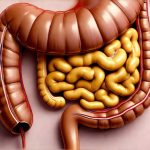The gut microbiome, often referred to as our “second brain,” is increasingly recognized for its profound impact on overall health – influencing everything from digestion and immunity to mental wellbeing and chronic disease risk. For many, the idea of improving gut health evokes images of restrictive diets, eliminating entire food groups, and a general feeling of deprivation. However, creating a truly gut-healthy meal plan doesn’t necessitate such drastic measures. In fact, overly restrictive approaches can sometimes backfire, leading to nutrient deficiencies and even increased stress – factors that negatively impact the microbiome. A sustainable and effective strategy focuses on nourishing the existing beneficial bacteria within our gut, diversifying microbial populations, and supporting a balanced ecosystem, all while enjoying a wide variety of delicious foods.
This article will explore how to build a meal plan that prioritizes gut health without resorting to elimination diets. We’ll focus on incorporating food choices that promote microbial diversity, reduce inflammation, and support optimal digestive function – all achievable through mindful eating habits rather than rigid restrictions. The goal is not just what you eat, but how you eat it, recognizing the interconnectedness between diet, lifestyle, and a thriving gut microbiome. We’ll move beyond trendy diets to focus on long-term, sustainable strategies for cultivating a healthy gut and improving overall health. If you’re recovering from something like food poisoning, building a recovery plan can be the first step to restoring balance.
Understanding Gut Health & Dietary Influences
The human gut is home to trillions of microorganisms – bacteria, fungi, viruses, and other microbes – collectively known as the gut microbiota. This complex ecosystem plays a crucial role in numerous bodily functions. These microbes aid in digesting food, synthesizing vitamins (like K and B vitamins), regulating immune responses, protecting against pathogens, and even influencing brain function through the gut-brain axis. A healthy gut microbiome is characterized by diversity – meaning a wide range of different microbial species are present. This diversity provides resilience and adaptability, allowing the gut to better withstand disruptions like antibiotic use or dietary changes.
Diet is arguably one of the most significant factors shaping the composition of our gut microbiota. Highly processed foods, high in sugar and saturated fats, tend to diminish microbial diversity and promote the growth of less desirable bacteria. Conversely, diets rich in fiber, plant-based foods, fermented foods, and healthy fats support a diverse and flourishing microbiome. It’s not about eliminating all “unhealthy” foods – occasional indulgence is perfectly acceptable – but rather prioritizing nutrient-dense options that actively nourish beneficial gut bacteria. Focusing on whole, unprocessed foods provides the building blocks for microbial diversity and overall gut health. Consider creating a weekly plan to stay on track with your dietary goals.
The relationship between diet and gut health isn’t a one-way street. The microbiome itself influences our food preferences! Certain microbes thrive on specific compounds in food, leading to cravings for those foods – creating a feedback loop. Understanding this dynamic can help us make more conscious choices that support both our gut and overall wellbeing. This is why sustainable changes are so important; restrictive diets often lead to frustration and ultimately, reverting back to less optimal habits. You might also find it useful to learn about detecting delayed food reactions that can impact your gut health.
Building Blocks of A Gut-Friendly Meal Plan
A cornerstone of any gut-healthy meal plan is fiber. Fiber isn’t digested by our bodies but serves as food for the beneficial bacteria in our colon, promoting their growth and activity. There are two main types: soluble fiber (found in oats, beans, apples) which dissolves in water and forms a gel-like substance, and insoluble fiber (found in whole grains, vegetables) which adds bulk to stool and aids digestion. Aiming for 25-35 grams of fiber per day is a good starting point, but individual needs vary. Gradually increasing fiber intake is essential to avoid digestive discomfort like bloating or gas.
Beyond fiber, incorporating prebiotic and probiotic-rich foods is key. Prebiotics are compounds that feed beneficial bacteria, while probiotics are live microorganisms themselves. Excellent prebiotic sources include garlic, onions, leeks, asparagus, bananas, oats, and apples. Probiotic-rich foods include yogurt (with live cultures), kefir, sauerkraut, kimchi, kombucha, and miso. While probiotic supplements can be helpful in some cases, obtaining probiotics through food is generally preferred as it provides a wider range of strains and additional nutrients.
Finally, don’t underestimate the power of polyphenols. These plant compounds found in fruits, vegetables, tea, coffee, and dark chocolate have antioxidant and anti-inflammatory properties that benefit both our health and the gut microbiome. Polyphenols can transform into beneficial metabolites by gut bacteria, further enhancing their effects. Building a meal plan around these foundational elements – fiber, prebiotics, probiotics, and polyphenols – provides a solid framework for supporting a healthy gut. If you’re experiencing daily discomfort, building a gentle meal plan can offer much-needed relief.
Optimizing Digestion & Absorption
Even the most nutrient-rich foods won’t benefit your gut if they aren’t properly digested and absorbed. One crucial element is mindful eating: slowing down during meals, chewing thoroughly, and paying attention to hunger cues. This allows for better enzymatic breakdown of food and reduces strain on the digestive system. Eating in a relaxed state – avoiding stress or distractions – also optimizes digestion.
Another important factor is hydration. Water helps move food through the digestive tract and supports the activity of gut bacteria. Aiming for at least eight glasses of water per day is recommended, but individual needs vary based on activity level and climate. Consider incorporating herbal teas as part of your daily fluid intake, as some herbs (like ginger or peppermint) can aid digestion.
Finally, consider food pairings. Combining certain foods can enhance nutrient absorption and reduce digestive discomfort. For instance, pairing iron-rich foods with vitamin C enhances iron absorption. Avoiding the simultaneous consumption of large amounts of protein and starch can also improve digestion for some individuals. Paying attention to how different food combinations affect your body is a valuable step in optimizing gut health. A safe meal plan for indigestion relief can be beneficial here, too.
The Role of Fermented Foods & Beverages
Fermented foods, as mentioned earlier, are naturally rich in probiotics – beneficial bacteria that contribute to a diverse microbiome. However, their benefits extend beyond just probiotic content. The fermentation process itself creates unique compounds that can enhance digestibility and nutrient availability. For example, the lacto-fermentation of vegetables like sauerkraut produces lactic acid, which aids digestion and preserves nutrients.
Introducing fermented foods gradually is important, as some individuals may experience temporary digestive upset when first starting. Begin with small portions and observe how your body responds. Variety is also key – different fermented foods contain different strains of probiotics. Experimenting with kefir, kimchi, kombucha, miso, and traditionally fermented pickles can provide a broader spectrum of beneficial bacteria.
It’s important to note that not all products labeled “fermented” are created equal. Many commercially available yogurts and fermented beverages undergo pasteurization after fermentation, which kills the live cultures. Look for products specifically labeled as containing “live and active cultures.” Making your own fermented foods at home is another great option, allowing you to control the ingredients and ensure optimal probiotic content.
Incorporating Healthy Fats & Reducing Inflammation
Chronic inflammation can disrupt the gut microbiome and contribute to various health problems. Dietary fats play a significant role in modulating inflammation. While some fats are pro-inflammatory (like trans fats found in processed foods), others are anti-inflammatory and support gut health. Omega-3 fatty acids, found in fatty fish, flaxseeds, chia seeds, and walnuts, have potent anti-inflammatory properties and can improve microbial diversity.
Prioritizing healthy fat sources over highly processed oils is crucial. Opt for olive oil, avocado oil, coconut oil (in moderation), and nuts/seeds as primary fat sources. Reducing intake of saturated fats from red meat and processed foods can also help lower inflammation.
Furthermore, polyphenol-rich foods often contain fats that support gut health. Avocados, for example, are rich in both healthy fats and polyphenols. Incorporating these foods into your diet not only provides essential nutrients but also actively contributes to a balanced microbiome and reduced inflammation – creating a positive cycle of health. Remember, it’s about balance and mindful choices, not rigid restrictions. You may want to consider how to build a meal plan that minimizes indigestion as well.


















